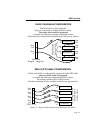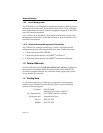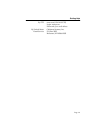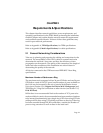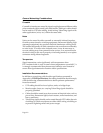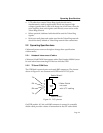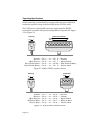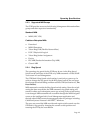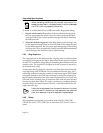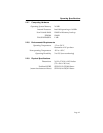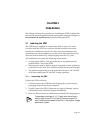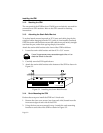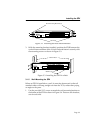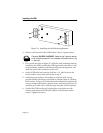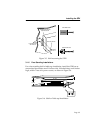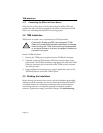
Operating Specifications
Page 2-6
When cancelling a MIB override, the user may have to reset
twice (as described in the steps below) to actually change
the STHI hub’s ring speed by the switch.
To return to switch control from a MIB-overridden Ring Speed setting:
1. Regain switch control. Regardless of the actual desired ring speed,
the user must toggle the switch out of its current position and then
reset the STHI to put a switch-position change into effect, cancelling
the MIB override.
2. Select the desired ring speed. If the Ring Speed switch setting is not
yet the desired setting (it may now be the same as the setting dictated
by the MIB command), the user must again change the switch setting
and reset the STH to complete the change from the MIB-commanded
speed setting to the desired switch-set speed setting,
2.2.5 Ring Sequence
The ring sequence for the stations on the ring (the order in which stations
are logically arranged on the ring) is determined by the physical location
of each TCU connection, progressing in ascending stack number and port
number order. The sequence is changed each time a station is inserted or
de-inserted from a ring.
To determine the ring sequence, consider only those ports inserted into the
ring. Beginning at the STHI hub’s lowest numbered inserted port, list in
ascending numerical order the number of each inserted port. If STH hubs
have been stacked to the STHI, then continue by listing those inserted in
the STH hub numbered lowest in the stack. Repeatedly move to each next
STH and list the inserted ports in numerical order until all ports inserted
into the ring have been listed. The order is continuous, wrapping directly
from the stack’s last inserted port to the first—from the bottom of the list,
right back to the top.
Hubs that are bypassed from the stack’s common ring must
not be counted in the common ring sequence; they comprise
their own separate rings with separate ring sequences.
2.2.6 Safety
This equipment is designed in accordance with UL478, UL910, NEC
725-2(b), CSA, IEC, TUV, VDE Class A, and meets FCC Part 15, Class A
limits.
NOTE
TIP



